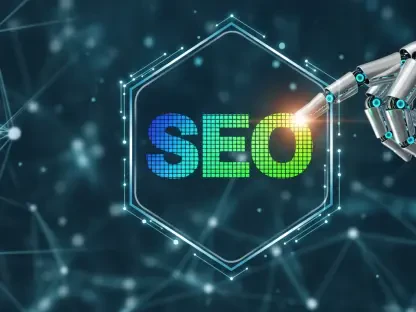Imagine a digital marketing landscape where a single channel consistently delivers a staggering $36 return for every $1 invested, outpacing even the most viral social media campaigns, and remains a cornerstone for B2B businesses seeking to build trust and drive conversions. This is the reality of email marketing technology in 2025, a tool that adapts to modern demands amidst the noise of AI innovations and short-form video trends. This review explores the evolution, capabilities, and real-world impact of email marketing technology, offering a deep dive into why it continues to dominate B2B strategies.
Introduction to Email Marketing Technology
Email marketing technology has carved a unique niche in the digital marketing ecosystem by blending adaptability with measurable results. At its core, this technology encompasses platforms and tools designed to create, send, and track email campaigns, often integrating advanced analytics and automation to maximize impact. Its relevance persists despite the rise of newer channels, largely due to its ability to deliver personalized communication directly to decision-makers in a professional context.
The evolution of email marketing reflects a journey of constant refinement, from basic mass emailing to sophisticated systems that leverage data and automation. This adaptability ensures it remains a preferred channel for B2B marketers who value precision in reaching niche audiences. Unlike fleeting social media trends, email offers a controlled environment where businesses can nurture long-term relationships with prospects and clients.
A key driver of email’s enduring significance is its cost-effectiveness, particularly for B2B sectors where budgets must align with tangible outcomes. This review aims to unpack the components that make email marketing technology indispensable, examining its features, recent advancements, and potential for shaping future digital engagement strategies.
Core Features of Email Marketing Technology
Hyper-Personalization Through AI
One of the standout capabilities of modern email marketing technology lies in its use of artificial intelligence to achieve hyper-personalization. By analyzing vast datasets—such as browsing history, purchase behavior, and industry-specific needs—AI tailors content to individual recipients, ensuring relevance that generic campaigns cannot match. This precision boosts engagement, as prospects receive messages that resonate with their unique challenges and interests.
The technical foundation of AI-driven personalization involves machine learning algorithms that continuously refine content recommendations based on user interactions. For B2B marketers, this means crafting emails that address specific pain points, such as offering a logistics solution to a supply chain manager. The result is a significant uptick in conversion rates, as personalized emails often outperform broad messaging by creating a sense of direct dialogue.
Beyond engagement, the real-world impact of this feature is evident in its ability to scale personalization across large audiences without sacrificing quality. Businesses can now send thousands of tailored emails with minimal manual input, a feat that redefines efficiency. This capability positions email marketing technology as a vital tool for staying competitive in a data-driven market.
Integration with CRM and Lead Generation Tools
Another critical feature is the seamless integration of email marketing technology with CRM platforms and lead generation tools. This connectivity creates automated workflows that streamline the process of nurturing leads from initial contact to final sale. For B2B strategies, where sales cycles are often lengthy, such integration ensures consistent communication without overwhelming marketing teams.
Functionally, this feature allows for real-time data syncing between systems, enabling marketers to trigger emails based on specific actions, like a prospect downloading a whitepaper. The efficiency gains are substantial, as automation reduces repetitive tasks and minimizes human error. Moreover, it provides a holistic view of lead progression, empowering teams to adjust campaigns on the fly for optimal results.
The importance of this integration cannot be overstated in B2B contexts, where relationship-building is paramount. By aligning email efforts with broader CRM strategies, businesses can deliver timely, relevant content that moves prospects through the funnel. This synergy transforms email marketing technology into a central hub for managing customer interactions and driving revenue.
Recent Advancements in Email Marketing Tech
Email marketing technology has seen remarkable innovations that keep it at the forefront of digital tools. Interactive features, such as embedded polls, videos, and dynamic calls-to-action, have redefined user engagement by turning passive emails into active experiences. These elements encourage recipients to interact directly within the email, boosting click-through rates and providing valuable feedback to marketers.
A parallel advancement is the heightened focus on privacy compliance, aligning with stringent regulations like GDPR and India’s DPDP Act. Modern platforms now prioritize consent-first approaches, incorporating features like double opt-ins and transparent data usage policies. This shift not only ensures legal adherence but also fosters trust among B2B audiences who prioritize data security in professional communications.
Additionally, changing user behaviors and industry adoption patterns are shaping the technology’s trajectory. With over 70% of B2B emails opened on mobile devices, platforms have enhanced mobile optimization and accessibility features. These updates, combined with broader adoption across sectors, underscore email marketing’s ability to evolve with market demands, ensuring its relevance in a competitive landscape.
Real-World Applications in B2B Marketing
In B2B marketing, email technology proves its versatility through targeted applications across various industries. For instance, tech firms use email to nurture leads by distributing in-depth whitepapers that address specific software challenges faced by IT managers. This content-driven approach positions companies as thought leaders, fostering credibility among potential clients.
Another compelling use case is seen in manufacturing sectors, where email campaigns deliver case studies highlighting successful implementations of equipment or processes. These narratives provide tangible proof of value, often tipping the scales in favor of a purchase decision. Such campaigns illustrate how email can bridge the gap between awareness and action in complex sales environments.
Notable successes further highlight email’s impact, with some B2B campaigns achieving double-digit conversion rates through meticulously segmented lists and automated drip sequences. These examples demonstrate the technology’s capacity to adapt to niche needs, whether through personalized messaging for healthcare providers or event invitations for financial consultants. The flexibility of email marketing solidifies its role as a dynamic asset in B2B arsenals.
Challenges and Limitations of Email Marketing Tech
Despite its strengths, email marketing technology faces several challenges that temper its effectiveness. Technical hurdles in achieving accurate personalization remain a concern, as incomplete or outdated data can lead to irrelevant content that alienates recipients. Addressing this requires ongoing investment in data quality and AI refinement, a process that can strain resources.
Deliverability issues also pose a significant obstacle, with emails often landing in spam folders due to stringent filters or poor sender reputation. This problem undermines campaign reach, particularly for B2B marketers targeting busy professionals. Solutions like authentication protocols and list hygiene practices are being adopted, though they demand constant vigilance to maintain effectiveness.
Compliance with evolving privacy laws adds another layer of complexity, as regulations differ across regions and change frequently. Navigating this landscape requires robust systems and legal expertise, which can be daunting for smaller businesses. Meanwhile, intense market competition drives the need for continuous innovation, pushing vendors to balance feature development with user-friendly design to stay ahead.
Future Outlook for Email Marketing Technology
Looking ahead, email marketing technology is poised for transformative growth with emerging trends that promise to enhance its capabilities. AI-generated content stands out as a game-changer, enabling the creation of hyper-targeted emails at scale with minimal human input. This development could redefine campaign efficiency, particularly for B2B marketers managing diverse audiences.
Predictive analytics is another area of potential, offering insights into the optimal timing and content for emails based on historical data and user behavior. This forward-thinking approach allows for preemptive adjustments to campaigns, maximizing impact. Additionally, innovations like voice-activated emails hint at new accessibility frontiers, catering to users who prefer hands-free interaction in busy professional settings.
Over the long term, these advancements are expected to deepen email’s role in B2B marketing by enhancing engagement and precision. From 2025 to 2027, adoption of such technologies will likely accelerate, driven by the need for competitive differentiation. The trajectory suggests a future where email marketing remains a pivotal tool for fostering digital connections and driving business outcomes.
Conclusion and Key Takeaways
Reflecting on the journey of email marketing technology, its evolution has marked a significant chapter in B2B digital strategies, blending adaptability with measurable success. The exploration of its features, from AI personalization to CRM integration, has revealed a robust toolset that empowers businesses to connect meaningfully with their audiences. Challenges like deliverability and compliance have tested its resilience, yet ongoing innovations offer promising resolutions.
Looking beyond the review, businesses are encouraged to invest in refining data quality to enhance personalization accuracy, ensuring emails hit the mark with relevance. Exploring partnerships with technology providers to stay ahead of privacy regulations has also emerged as a practical step. These actions, coupled with a commitment to testing emerging features like predictive analytics, position companies to harness email’s full potential in future campaigns.
Ultimately, the path forward suggests a focus on continuous learning and adaptation, leveraging email marketing technology as a dynamic ally in navigating the complexities of B2B engagement. By prioritizing strategic implementation and innovation, marketers can transform challenges into opportunities, securing a lasting edge in a digital-first world.








